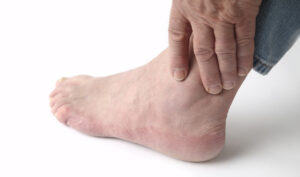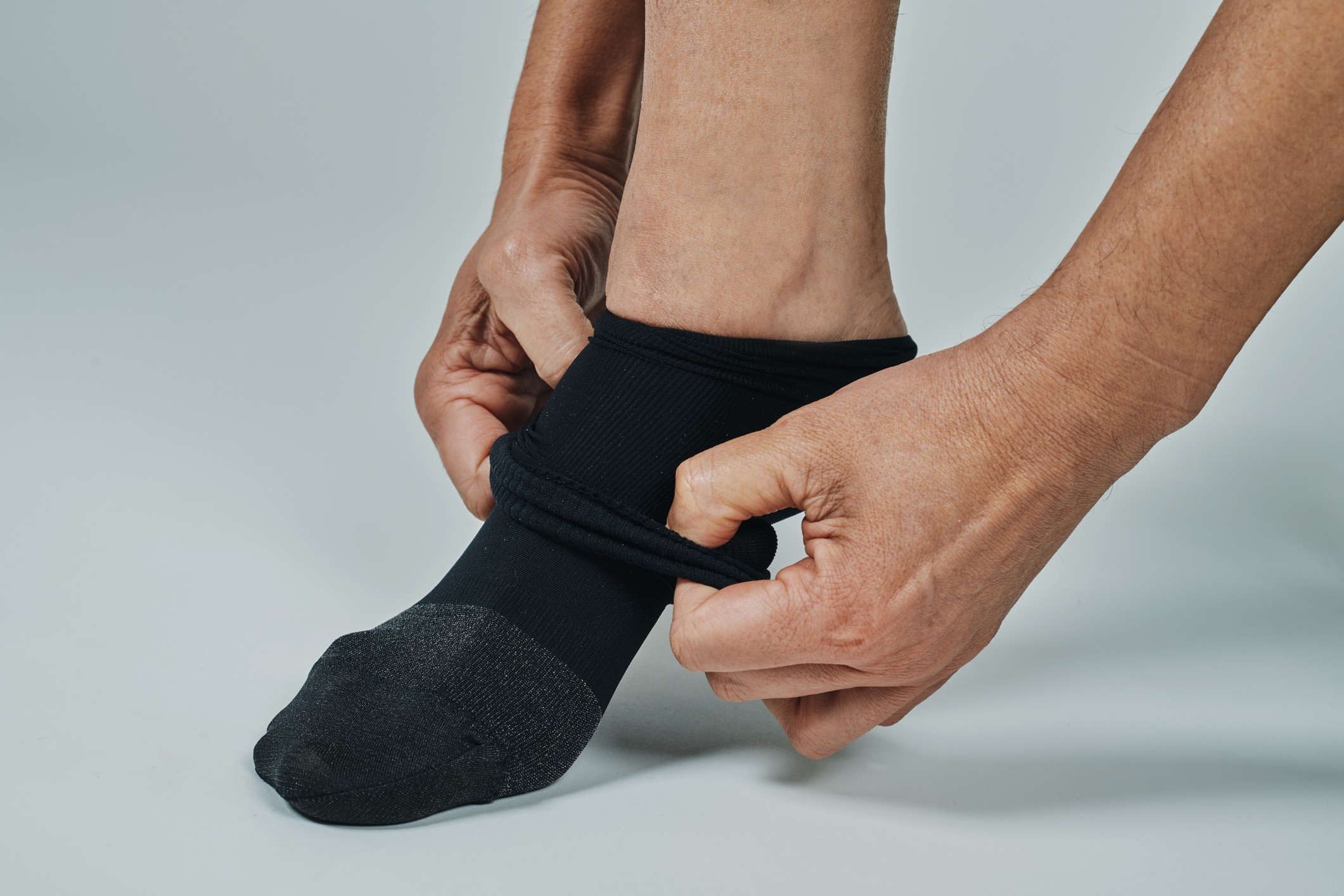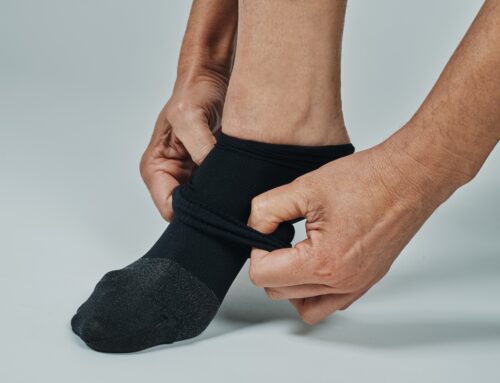Ankle pain is a common issue that affects people of all ages and activity levels, often making simple tasks like walking or climbing stairs feel like a challenge. Whether it’s due to a sudden injury, overuse, or underlying conditions like arthritis, ankle pain can significantly disrupt daily routines and limit mobility. This discomfort can affect anyone, from athletes pushing their limits to those dealing with the wear and tear of everyday life.
What Causes Ankle Pain?
Ankle pain can result from various causes, ranging from acute injuries to chronic conditions. The most common culprits include sprains, strains, overuse, and arthritis.
- Sprains and Strains
These injuries occur when the ligaments or muscles around the ankle are overstretched or torn, often due to sudden movements, twisting, or awkward landings. Sprains and strains can happen to anyone, whether from a sports-related incident or a simple misstep while walking. - Overuse
Repetitive activities, such as running, jumping, or even walking long distances, can put excessive stress on the ankle joints and tendons, leading to inflammation and pain. Over time, overuse can cause conditions like tendonitis, where the tendons become irritated or damaged. - Arthritis
Conditions like osteoarthritis and rheumatoid arthritis are common causes of chronic ankle pain. Arthritis gradually wears down the cartilage in the ankle joint, leading to pain, stiffness, and reduced mobility. This condition can develop over time, especially in older adults or those with a history of ankle injuries.
Even everyday activities can contribute to ankle pain. Walking on uneven surfaces, wearing unsupportive shoes, or carrying heavy loads can strain the ankles and exacerbate existing pain.
Signs You Shouldn’t Ignore
While mild ankle pain can often be managed at home, certain symptoms indicate more severe issues that should not be ignored. Recognizing these warning signs can help prevent long-term damage and ensure proper healing.
- Persistent Swelling or Bruising
Swelling or bruising that doesn’t subside within a few days could be a sign of a more serious injury, such as a severe sprain, fracture, or torn ligament. Persistent swelling often indicates internal damage that requires medical evaluation. - Inability to Bear Weight
If you find it difficult or impossible to put weight on your ankle, it could signal a severe injury. Pain when walking, standing, or even slight movements can indicate fractures or significant soft tissue damage that needs immediate attention. - Severe or Sharp Pain
Sharp or intense pain that worsens with movement or continues even at rest should not be ignored. This could indicate a major tear, fracture, or other internal injury that needs prompt medical care. - Visible Deformity
Any noticeable change in the shape or alignment of your ankle suggests a possible dislocation or fracture. Visible deformities require immediate medical intervention to prevent further complications. - Numbness or Tingling
These sensations can indicate nerve damage or compression, often associated with severe injuries or conditions like compartment syndrome. Numbness or tingling alongside pain is a clear sign to seek professional help.
If you experience any of these symptoms, it’s important to consult with a healthcare professional as soon as possible. Delaying treatment can lead to complications, such as chronic pain, reduced mobility, or long-term joint damage. A medical professional can accurately diagnose the severity of your ankle pain and recommend the appropriate course of action, whether it’s physical therapy, bracing, or, in severe cases, surgery.
Immediate Steps to Manage Ankle Pain
When ankle pain strikes, taking immediate action can help reduce discomfort and prevent further injury. One of the most effective ways to manage acute ankle pain is the RICE method: Rest, Ice, Compression, and Elevation.
- Rest
The first step in managing ankle pain is to rest the affected area. Avoid putting weight on the ankle and reduce activities that cause pain. Giving your ankle time to rest helps prevent additional strain on the injured tissues, allowing them to heal properly. - Ice
Applying ice to the injured ankle can help reduce swelling and numb the pain. Use an ice pack wrapped in a thin cloth and apply it to the ankle for 15-20 minutes every few hours during the first 48 hours after injury. Avoid applying ice directly to the skin to prevent frostbite. - Compression
Wrapping the ankle with an elastic bandage or compression wrap can help control swelling and support the injured area. Make sure the wrap is snug but not too tight, as excessive compression can hinder circulation. Compression helps keep swelling in check, which is essential for a speedy recovery. - Elevation
Elevating the injured ankle above the level of your heart helps reduce swelling by encouraging fluid to drain away from the affected area. Prop your ankle up on pillows when sitting or lying down to keep it elevated, especially during the first few days after the injury.
Reducing your activity level is necessary when dealing with ankle pain. Continuing to engage in normal activities or high-impact exercises can worsen the injury, leading to prolonged pain and delayed recovery.
How to Support Your Ankle

Using Braces and Compression Wear
Ankle braces and compression wear are excellent tools for stabilizing the ankle and reducing pain. Braces provide external support that limits the movement of the ankle, helping to prevent re-injury and allowing damaged tissues to heal. They are particularly useful for conditions like sprains or after minor surgeries, offering a balance of mobility and protection.
Compression wear, such as compression socks or wraps, works by applying gentle pressure to the ankle. This helps reduce swelling, improves circulation, and provides mild support to the injured area. Compression wear is ideal for managing inflammation and can be used in conjunction with braces or as part of a recovery routine after physical activity.
Custom Ankle-Foot Orthotics
Custom Ankle-Foot Orthotics (AFOs) are specially designed devices that offer personalized support tailored to your specific needs. Unlike over-the-counter options, custom orthotics are crafted based on your foot and ankle structure, ensuring a precise fit that addresses the root cause of your pain.
These orthotics help redistribute weight across your foot, reducing stress on the ankle and correcting alignment issues that may contribute to pain. Whether you’re dealing with chronic conditions like arthritis, recovering from an injury, or experiencing discomfort due to flat feet, custom orthotics provide targeted relief that can significantly improve your mobility and comfort.
Choosing the Right Support Based on the Type of Pain
Selecting the appropriate ankle support depends on the type of pain you’re experiencing:
- Acute Injury Pain
If you’ve recently sprained or strained your ankle, a supportive ankle brace combined with compression wear can help stabilize the joint, reduce swelling, and prevent further damage. - Chronic Pain from Conditions like Arthritis
Custom orthotics are highly beneficial for those with ongoing conditions, as they offer long-term support tailored to your specific needs. AFOs can help manage chronic pain by improving joint alignment and reducing pressure on the affected area. - Post-Surgery or Severe Injury Recovery
For those recovering from surgery or a severe injury, a rigid ankle brace or specialized orthotic may be necessary to provide maximum support and limit movement during the healing process. - Mild Pain or Preventative Support
For those who experience occasional discomfort or want to prevent injury during physical activity, a soft ankle brace or compression wear may be sufficient to provide support and comfort.
Strengthening Exercises for Ankle Stability
Strengthening your ankles through targeted exercises is essential for improving stability, reducing pain, and preventing future injuries. By incorporating simple exercises into your routine, you can enhance both strength and flexibility in your ankles, making them more resilient to everyday stresses.
Simple Exercises to Improve Strength and Flexibility
Including specific exercises that target the ankle muscles and tendons can help build stability and reduce the likelihood of injury. Here are some effective exercises to incorporate:
- Ankle Circles
Ankle circles are a gentle exercise that improves the range of motion and flexibility. To perform this exercise, sit or lie down with your leg extended. Slowly rotate your ankle in a circular motion, making large circles in one direction for about 10 repetitions, then switch directions. This exercise helps loosen tight muscles and improve overall ankle mobility. - Calf Raises
Calf raises strengthen the muscles around your ankle, improving balance and support. Stand with your feet hip-width apart and slowly lift your heels off the ground, rising onto your toes. Hold the position for a second, then lower your heels back down. Aim for 2-3 sets of 10-15 repetitions. This exercise helps build strength in the calf muscles, which play a crucial role in ankle stability. - Resistance Band Exercises
Using a resistance band can add an extra challenge to your ankle exercises, promoting strength and flexibility. For a basic exercise, sit on the floor with your legs extended and loop a resistance band around the ball of your foot. Gently press your foot forward, stretching the band, and then slowly return to the starting position. Repeat this movement 10-15 times on each foot. This exercise targets the ankle’s stabilizing muscles, enhancing both strength and control.
Regularly engaging in ankle-strengthening exercises is key to maintaining ankle health and preventing injuries. Strong and flexible ankles provide better support and stability, reducing the risk of common problems like sprains and strains. These exercises not only help with recovery but also serve as preventative measures, keeping your ankles resilient against the demands of daily activities.
Lifestyle Changes to Prevent Ankle Pain
Making a few key lifestyle changes can greatly reduce your risk of ankle pain and keep your ankles healthy and strong. By paying attention to factors like footwear, weight management, and activity levels, you can prevent unnecessary strain on your ankles and maintain better overall mobility.
Proper Footwear
Wearing the right footwear goes a long way in helping to prevent ankle pain. Shoes that provide good arch support, cushioning, and stability can significantly reduce stress on your ankles. Avoid wearing high heels, unsupportive flats, or old, worn-out shoes that offer little to no support. Instead, choose shoes that fit well and are designed for your specific activities—whether that’s running, walking, or daily wear.
Footwear with a firm heel counter and shock-absorbing soles can help distribute weight evenly and protect your ankles from impact. If you have specific foot conditions, consider custom orthotics or insoles that provide additional support tailored to your needs. Proper footwear not only helps in managing existing pain but also plays a preventive role in keeping your ankles safe from injury.
Maintaining a Healthy Weight
Carrying excess weight puts additional stress on your ankles, increasing the risk of pain and injury. Maintaining a healthy weight is important for reducing the load on your joints and improving overall ankle health. Incorporate a balanced diet with plenty of fruits, vegetables, lean proteins, and whole grains to support weight management and overall well-being.
Regular physical activity, including low-impact exercises like swimming, cycling, or walking, can help you stay fit without putting unnecessary strain on your ankles. Keeping your weight in check not only benefits your ankles but also contributes to better joint health throughout your body.
Avoiding High-Impact Activities When Recovering
If you’re recovering from an ankle injury or experiencing ongoing pain, avoid high-impact activities that can worsen your condition. Activities like running, jumping, or playing high-intensity sports can put excessive strain on the ankle joints and delay healing.
Instead, opt for low-impact exercises that keep you active without putting extra pressure on your ankles. Swimming, stationary biking, or light stretching can help maintain your fitness while allowing your ankle to heal properly. Listening to your body and giving your ankles the time they need to recover is key to preventing further injury and ensuring a smooth return to your normal activities.
When to Seek Professional Help
While many cases of ankle pain can be managed with home care and lifestyle adjustments, some situations require the expertise of a healthcare professional. Understanding when to seek help is crucial in preventing long-term damage and ensuring your ankle heals properly.
Certain signs suggest that your ankle pain may be more serious than it seems. If you experience any of the following symptoms, it’s time to consult a healthcare provider:
- Persistent Pain
If your ankle pain persists for more than a few days despite rest and home treatments, it could indicate a more serious underlying issue, such as a fracture or ligament tear. - Severe Swelling or Bruising
Extensive swelling or bruising that doesn’t improve with time and care might suggest internal damage that needs professional evaluation. - Inability to Walk or Bear Weight
Difficulty walking or putting weight on your ankle without significant pain is a clear sign of a severe injury. This often indicates structural damage that needs medical attention. - Visible Deformity
Any noticeable changes in the shape or alignment of your ankle suggest a possible fracture or dislocation, which requires immediate care. - Recurring Pain or Instability
Chronic pain or recurring instability can be signs of untreated conditions, such as ligament damage or arthritis, which need targeted treatment to manage effectively.
Long-Term Relief with Orthotics and Braces
Custom orthotics and bracing are effective solutions for managing long-term ankle pain and preventing future injuries. Custom orthotics are tailored to your foot and ankle structure, providing support where you need it most and helping correct alignment issues that can contribute to pain. By redistributing pressure and improving overall foot mechanics, orthotics reduce the strain on your ankles, making daily activities more comfortable.
Braces, on the other hand, offer external support to stabilize the ankle, especially after an injury or surgery. They limit unwanted movement, reduce swelling, and promote healing by keeping the ankle in the correct position. Together, orthotics and bracing provide comprehensive support that can significantly improve your ankle’s health and functionality over time.
Chiropodist Foot Assessment
If you’re struggling with ankle pain, scheduling a professional foot assessment can provide valuable insights into your condition. At Care-Med, our Chiropodist specialize in foot and ankle health, offering personalized evaluations to identify the root cause of your pain. With over 18 years of experience, we provide custom orthotics and bracing solutions tailored to your needs, helping you get back on your feet with confidence.
Keep Your Ankles Strong and Pain-Free
Taking care of your ankles is essential for maintaining mobility and preventing long-term pain. By supporting and strengthening your ankles with the right techniques—whether it’s through braces, compression wear, custom orthotics, or targeted exercises—you can significantly reduce discomfort and improve overall stability. Remember, small changes like wearing proper footwear, managing your weight, and avoiding high-impact activities during recovery can make a big difference in protecting your ankles from further injury.
Proactive care is the key to keeping your ankles strong and healthy. Whether you’re managing a current issue or looking to prevent future problems, the steps you take today can lead to a more active, pain-free life. If your pain persists or worsens, don’t hesitate to seek professional help.
Your ankles support you every day—take the time to support them in return.
Share This Story, Choose Your Platform!
Table of Contents
We specialize in orthotics, body braces, and compression wear tailored to your unique needs in Toronto. Reach out to us at info@caremed.care or call 416-782-5353 to book your fitting and consultation.
Experience the difference of customized solutions designed just for you.











